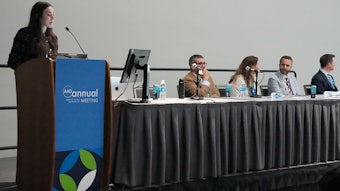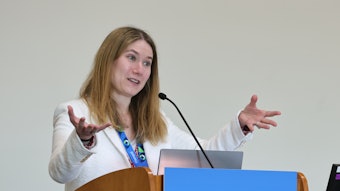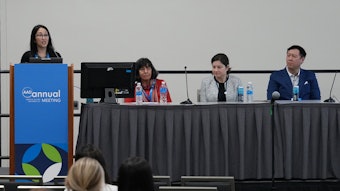Session for sensitive people
Sun sensitivity triggers include the usual and not-so-usual culprits.

U059 – Fun in the Sun: Photocontact Dermatitis and Related Conditions
7-8 a.m. | Sunday, March 10
Location: Room 25B
Photoallergic and phototoxic reactions can be triggered by any number of substances, including sunscreen, medications that are applied to the skin, certain fragrances, and even limes. Getting to the root of the reaction and finding the proper treatment requires a systematic approach.
That’s the challenge Brandon Adler, MD, FAAD, will tackle as the director of tomorrow’s session, U059 – Fun in the Sun: Photocontact Dermatitis and Related Conditions. Dr. Adler is a clinical assistant professor of dermatology at the Keck School of Medicine of the University of Southern California in Los Angeles.
“Limes can cause a phototoxic skin reaction with blisters or hyperpigmentation that can last for years,” Dr. Adler said. “Something as simple as lime juice on a hot sunny day can do it.”
Know the condition to find the treatment
According to Dr. Adler, the detective work includes comprehensive steps, including patient history, diagnostic test results, understanding diagnostic and therapeutic reactions, and knowing who needs to be photo patch tested versus who doesn’t.
“This systematic approach is really important because these are really impactful conditions,” he said. “They decrease the patient’s quality of life and a lot of times they can go on for years. You can really make a difference in a patient’s life by sitting down and listening to them and taking a methodical approach to the situation.”
One new development in recent years is the recognition that chronic actinic dermatitis, traditionally thought to mostly affect older, fair-skinned men, may develop in younger patients of color. Although the exact cause of chronic actinic dermatitis is unknown, Dr. Adler said this new understanding illustrates the need for dermatologists to expand their thinking when it comes to treating their patients.
“In reality, a lot of these sun reactions have been shown to be not uncommon in people with darker skin types,” he explained. “So, it’s important to not limit your thinking based on what the patient looks like. It’s important to consider the whole patient and not put them in boxes based on skin type.”
The detective work includes comprehensive steps:
• Patient history
• Diagnostic test results
• Understanding diagnostic and therapeutic reactions
• Knowing who needs to be photo patch tested versus who doesn’t

To patch or not?
There are many strategies for treating photoallergic and phototoxic reactions, but Dr. Adler said there is one test that should be used more than it is.
“The key test in cases of photoallergy — the gold standard test — is the photo patch test. It’s not nearly as widely performed as it should be,” he said. “I think the reason for that is that a lot of dermatologists don’t get adequate exposure to it during their residency.”
In some cases, however, testing may not be indicated. In those instances, Dr. Adler explained that dermatologists will have to go another route.
“For phototoxic reactions, we highlight that this is a clinical diagnosis,” he said. “There’s not a test available because testing the patient for these substances can trigger a severe, nonspecific skin reaction.”
Attend tomorrow morning’s session to learn more from Dr. Adler, and from Vincent Anthony DeLeo, MD, FAAD, who is also presenting on this topic.












